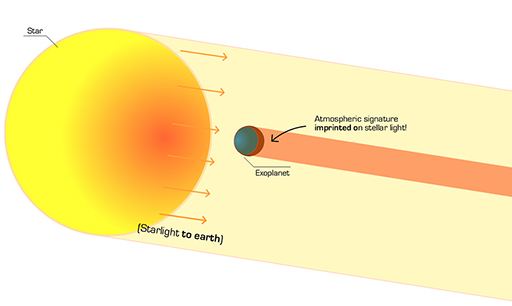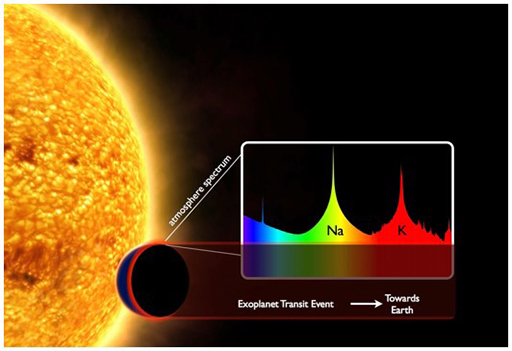2.3 Atmospheres and transits
When an exoplanet transits its star, of course the planet’s atmosphere passes in front of the star too. But the atmosphere isn’t completely opaque, so some of the starlight actually passes right through the atmosphere on its way to us, as shown in Figure 5. This means that the gases in the planet’s atmosphere can leave exactly the same sort of fingerprints on the starlight as we saw in Week 3, shown schematically in Figure 6. These fingerprints can help astronomers to work out what the planet’s atmosphere is made up of.

Of course, the fraction of starlight that passes through the planetary atmosphere itself is tiny, making this a technically very challenging task that requires meticulous observation and data processing. For a hot Jupiter transiting a Sun-like star this fraction might be 0.01%, but for an Earth-sized planet it could be just 0.00001%!
How can we extract the weak spectral signatures of the planet from the overwhelming starlight? One key method is transmission or transit spectroscopy. The fingerprints appear as tiny differences in the transit depth for different colours of light. For colours that are absorbed by atoms and molecules in the planet’s atmosphere, the transit is a tiny bit deeper – the planet appears to be bigger because the atmosphere is blocking a bit of extra starlight. The resulting spectrum, plotting transit depth for different colours, is shown schematically in Figure 7.


